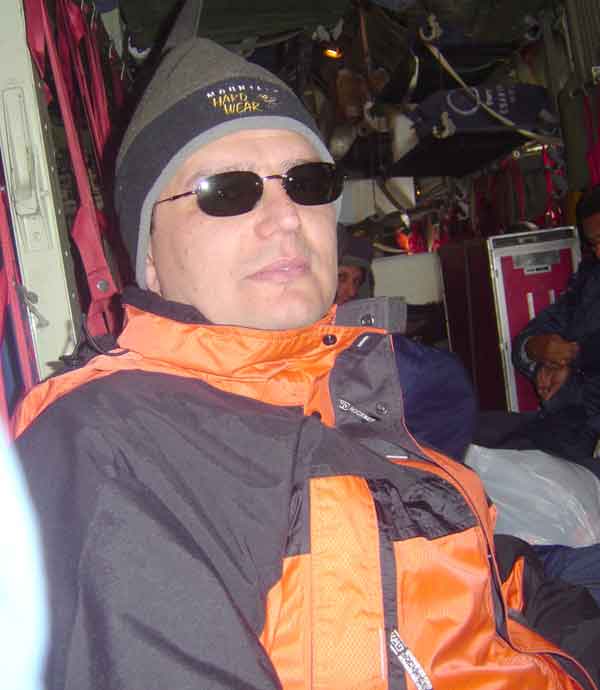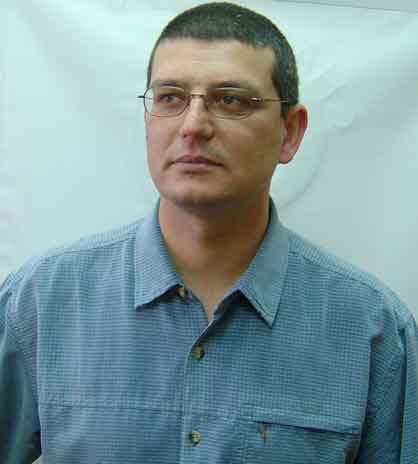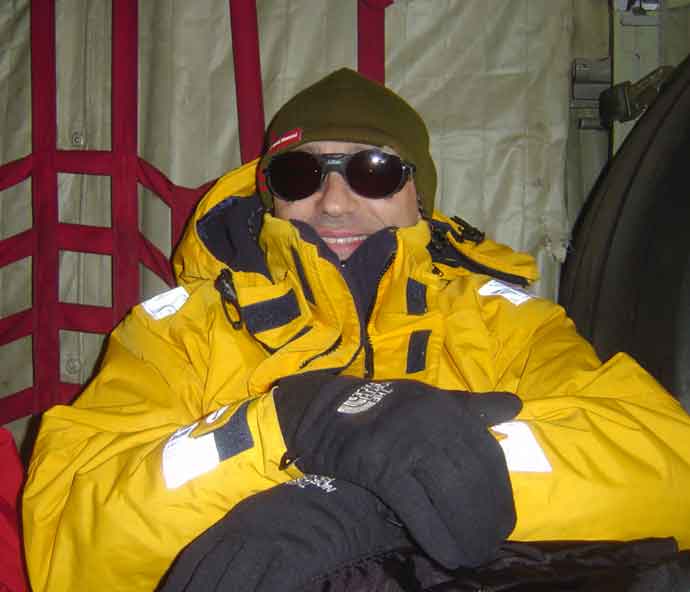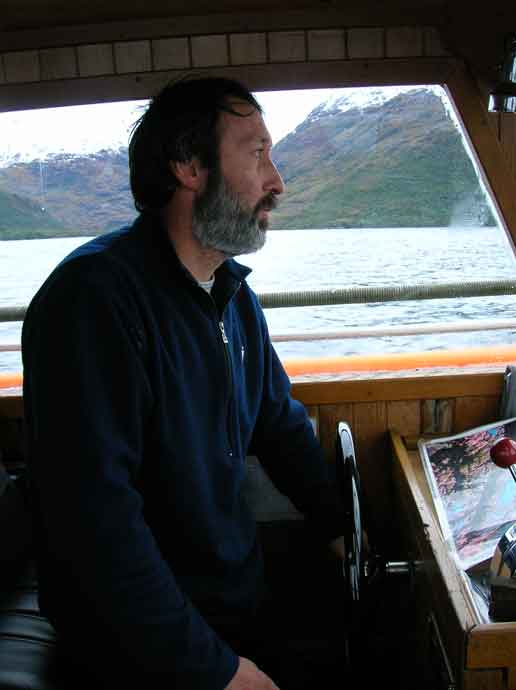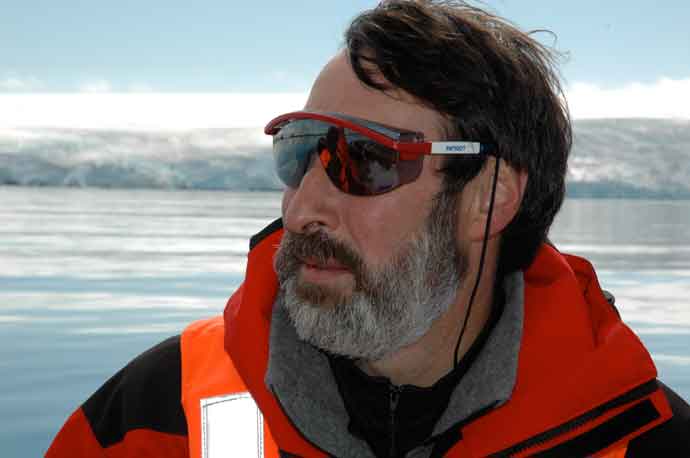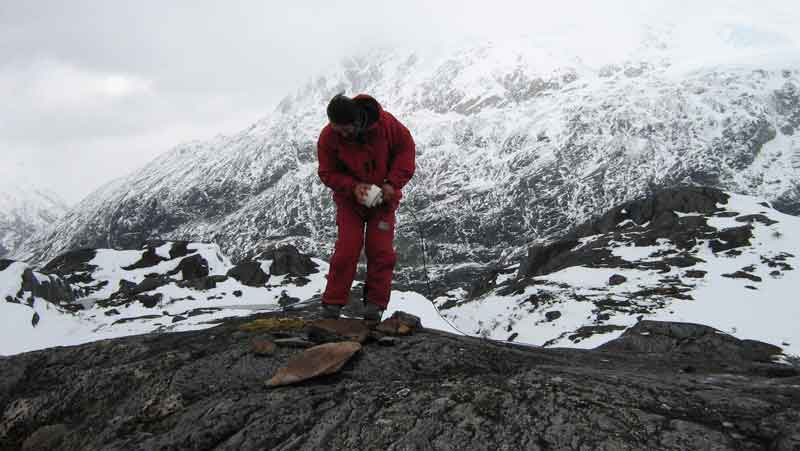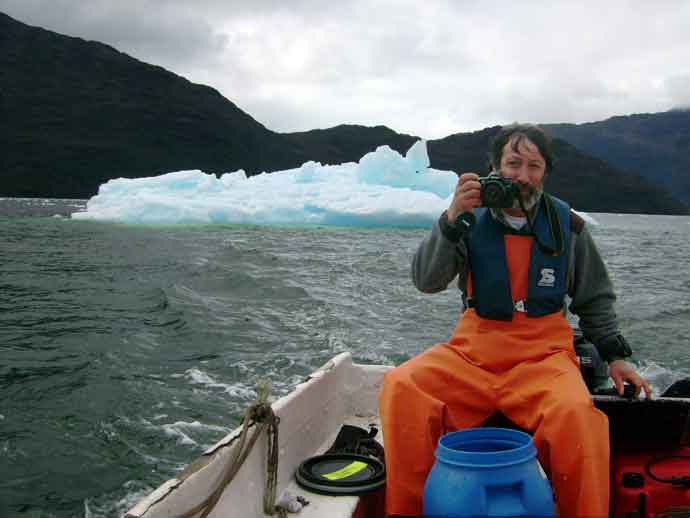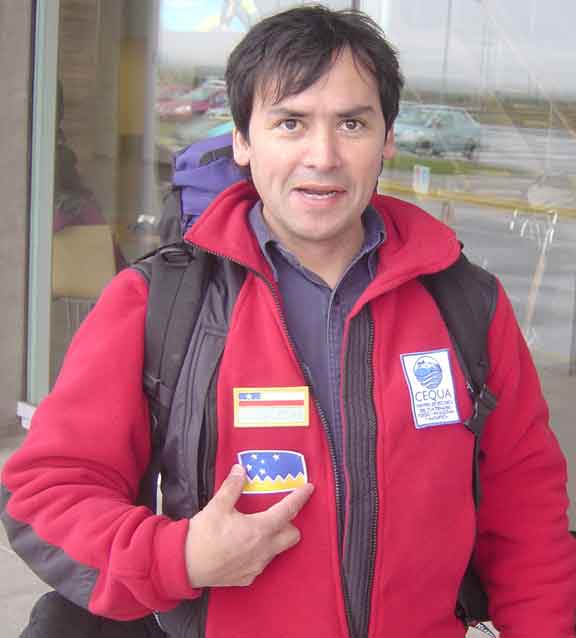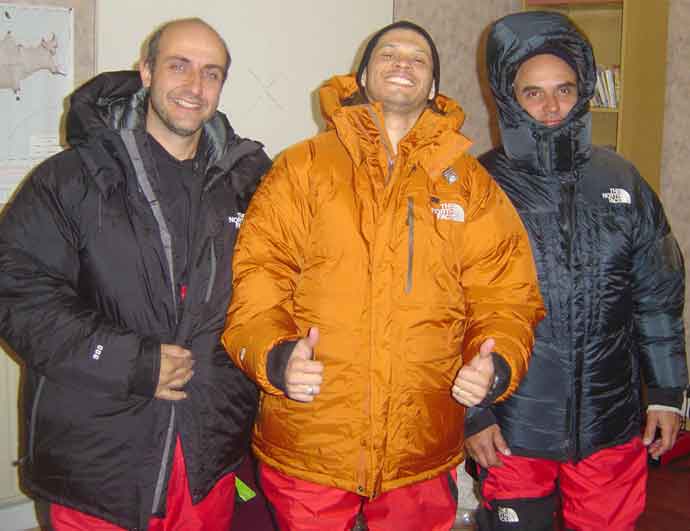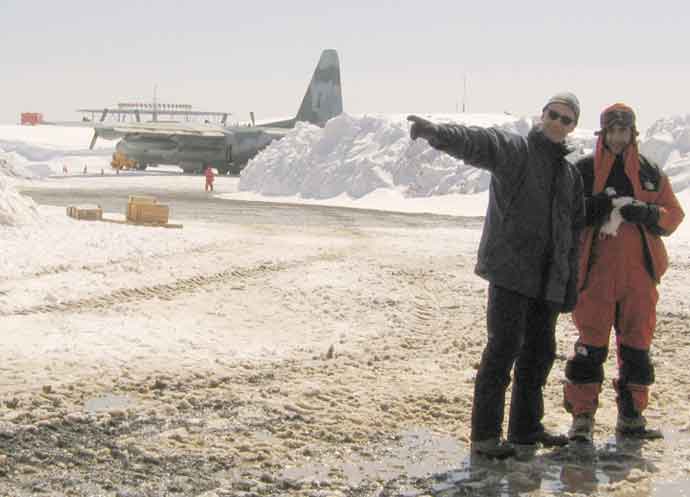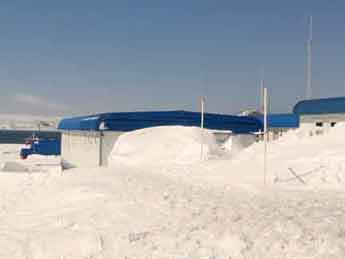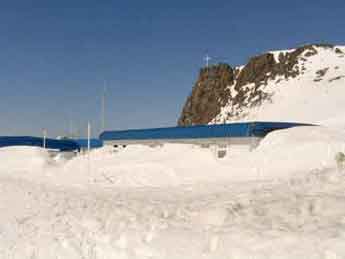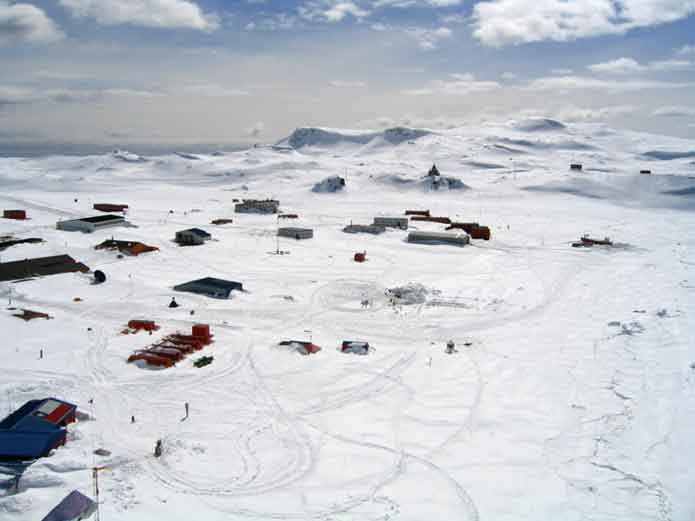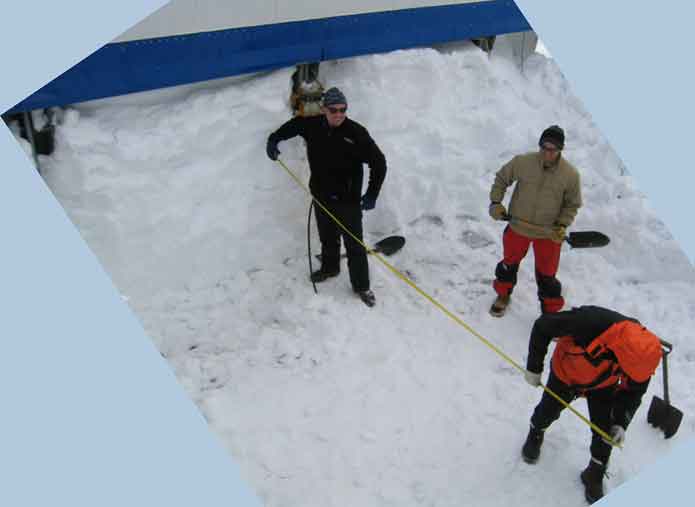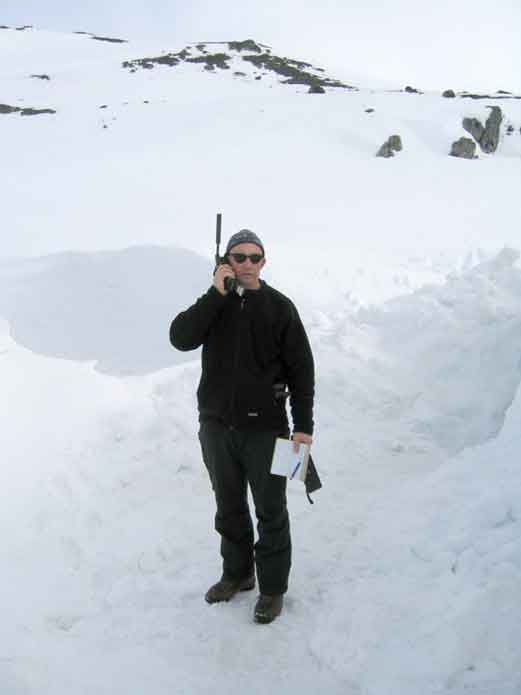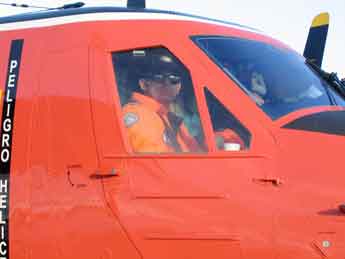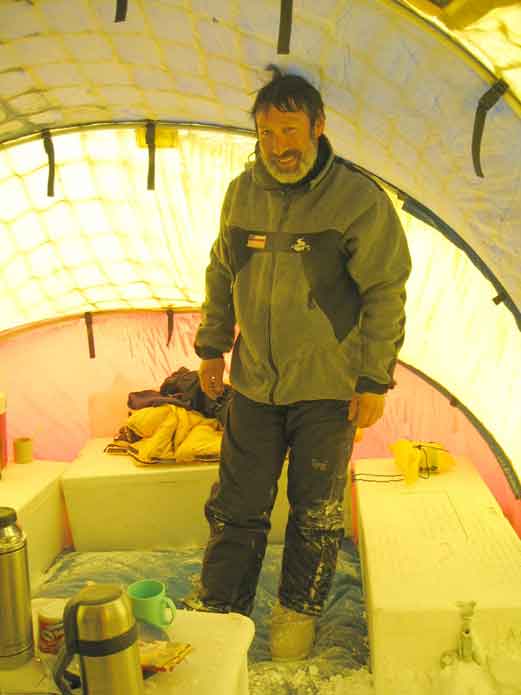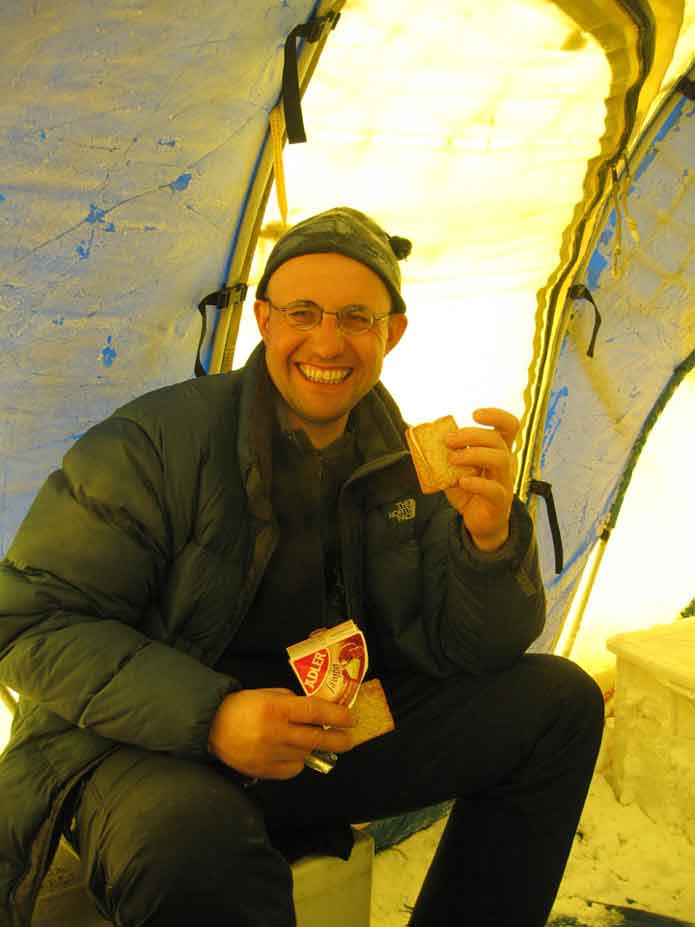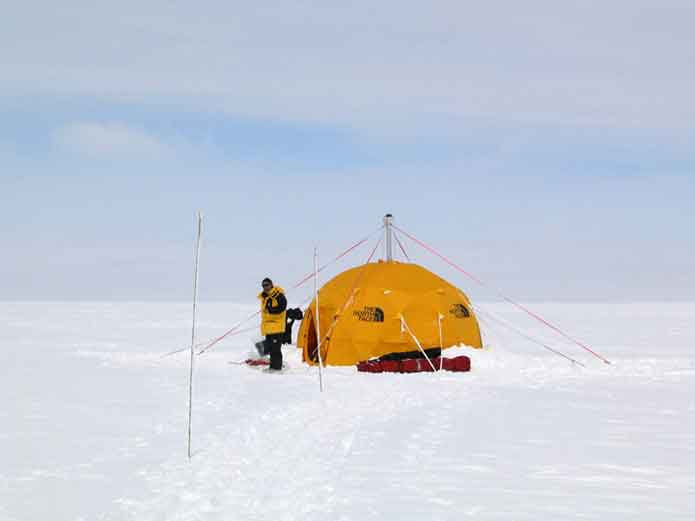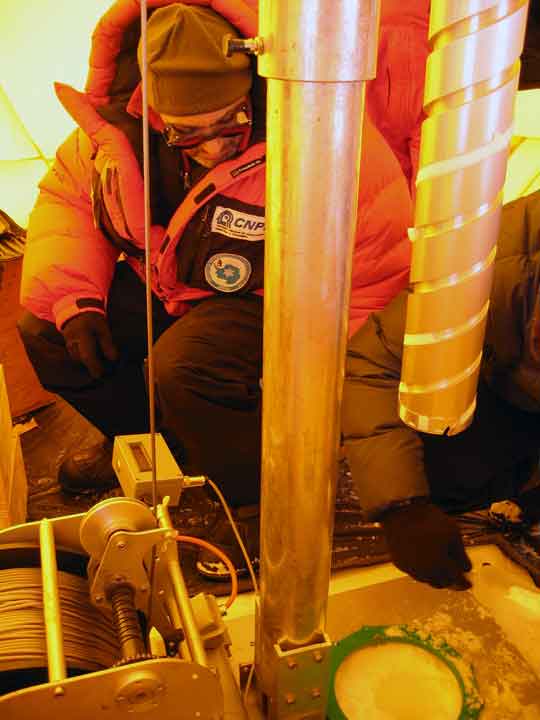A joint Brazilian-Chilean-USA expedition at Detroit Plateau Antarctic Peninsula
A joint Brazilian-Chilean-USA expedition at Detroit Plateau Antarctic Peninsula
Glaciological and Atmospheric Studies
This field work is part of CASA
English
Climate of the Antarctic and South America (CASA): Joint Brazilian-Chilean-US ice core drilling on the Detroit Plateau, Antarctic Peninsula
Español
Clima de Antártica y Sud-América (CASA) Extracción conjunta Brasil-Chile-Estados Unidos de testigo de hielo en el Plateau Detroit, Península Antártica.
Portuguese
Clima Antártico e Sul-Americano (CASA) Operação conjunta Brasil-Chile-EUA para testemunhagem do gelo no Platô Detroit, Península Antártica
Institutions
Universidade Federal do Rio Grande do Sul (UFRGS), Porto Alegre, Brazil
Universidade Estadual do Rio de Janeiro (UERJ), Rio de Janeiro, Brazil
Centro de Estudios del Cuaternario Fuego-Patagonia Antarctica (CEQUA)
Instituto Nacaional Antártico Chileno, Punta Arenas, Chile (INACH)
Universidad de Magallanes (UMAG), Punta Arenas, Chile
 Instituto Nacional de Pesquisas Espaciais (INPE)
Instituto Nacional de Pesquisas Espaciais (INPE)
Observatório Nacional (ON), Rio de Janeiro Brazil
University of Maine (UM), Orono, USA
Research Group
Professor Jefferson Cardia Simões (UFRGS),
07/08 Joint Expedition leader
Dr. Alexandre Santos de Alencar (UERJ)
Dr. Andrei Kurbatov (UM)
Dr. Jandyr de Menezes Travassos (ON)
Dr. Jorge Arigony Neto (UFRGS)
Dr. Jorge Elias Musa Carballo (ON)
Dr. Ricardo Jaña (INACH)(CEQUA
Francisco Eliseu Aquino (UFRGS)
Luiz Fernando Magalhães Reis (UFRGS)
Marcelo Arrevalo (UMAG)
Heber Passos (INPE)
7 November, 2007 to 14 December, 2007

Camp location
Plateau Detroit, Antarctic Peninsula, approximately at 2.000 m above sea level
at 64°05’S, 59°36°W.
Main field activities
- Firn and ice coring (to obtain up to 100 m deep ice cores) at the site
- Ultraclean snow trenches sampling
- Remote sensing (radar) ground truth fieldwork
- GPR survey at the ice core site
- Automatic weather station (AWS) will be place at the site
- Air sampling at the surface
CASA participates in the following IPY activities:
Antarctic Surface Accumulation and Ice Discharge (ASAID)
APICS: Antarctic Peninsula Ice and Climate System
APICS: Antarctic Peninsula Ice and Climate System
Date: November 14, 2007
Location: Punta Areanas, Chile
Temperature: 8°C ( 46.4°F)
Elevation: 10 meters (32.8 feet)
By: Andrei K.
I left Bangor at 1 pm on November 12, 2007. After traveling for 25 hours I arrived to Punta Arenas, Chile on November 13.
It was just a short drive from the airport to my hotel and a shower revived me very quickly. I went to the INACH building for a brief meeting with Jefferson Simões, Francisco Aquino (both from UFRGS) and Ricardo Jaña (INACH).
I learned that several members of CASA expedition had already crossed the Drake Passage on the Brazilian Antarctic Program vessel Ary Rongel and were ready to unload our expedition cargo at the Chilean base Escudero on King George Island (see the maps). One very important piece is the freezer and ice core boxes for the transport and storage of the ice cores we will be drilling.
We also have a problem with our gear that was sent two weeks ago from Maine and for some reason has not arrived in Punta Arenas. Potentially it could create a logistical issue because we have to place this gear on a C-130 flight scheduled for November 16, operated by Brazilian Air Force (Forca Aerea Brasileira, or FAB). We spent most of the day trying to understand the problem and figure out a way to correct it.
We cannot spend a lot of time in Punta Arenas waiting for our shipment because we already have Twin Otter flights scheduled with the Chilean Air Force (Fuerza Aérea de Chile or FACh). Hopefully our efforts to trouble shoot the shipment helped and we will know more tomorrow.
Date: November 15, 2007
Location: Punta Arenas, Chile
Temperature: 12°C (54°F)
Elevation: 10 meters
Written by: Andrei K.
Today at 7.30 am a C-130 operated by Brazilian Airways took members of the Brazilian Antarctic expedition to King George Island. We are next on the list, scheduled for tomorrow.
Our team members that deployed earlier by boat were transferring expedition cargo to the Chilean station and were opening the station after the winter. They had to deal with a lot of snow blocking the station entrances. Thanks to the internet and local cell phone service from Entel we were able to chat with our team members using cell phone and then Skype. The wind at king George Island was increasing today and pressure was dropping which could potentially could impact our plans for tomorrow.
We also got word from the shipping company. Our gear will be delayed at least another week. We spend a day trying to replace missing gear from local climbing stores. We should hear later today from the C-130 commander if we are leaving tomorrow.
Date: November 16, 2007
Location: Esqudero Base, King George Island, Antarctica
Longitude: 58 degrees, 56 minutes, West
Latitude: 62 degrees, 12 minutes, South
Temperature: -8°C ( 17.6°F)
Elevation: not given
By: Andrei K.
Today at 9 am we left Punta Arenas on a Brazilian C–130 and two hours later we landed at the Chilean Frei base on King George Island. One striking thing about this place is a number of bases or research stations located in close proximity to each other. Next to Chilean Frei base is the Russian Bellingshausen base and Chilean research base Esqudero. We had several members of the Korean Expedition in our flight that had to travel to their base. There is also a Chinese base and several other countries have a presence as well.
We were invited for lunch at the Frei base because we are only starting to getting cold water in our buildings. It took only one day for the personal of Esqudero base with some help from our advance party to start the generators and get water in our kitchen module. We made some progress with the expedition planning, gear transport and the installation of the freezer module for ice core storage.
Tomorrow, we are planning to cook breakfast in our kitchen module; the first since it was stored for the winter last year. We will keep working on snow removal so that we can get to all the doors and to begin installing our freezer.
Our expedition food needs to be sorted and packed as well. We need to be ready for a Twin Otter flight to the Detroit Plateau in case the weather improves.
Date: November 17, 2007
Location: Esqudero Base, King George Island, Antarctica
Longitude: 58 degrees, 56 minutes, West
Latitude: 62 degrees, 12 minutes, South
Written by: Andrei K.
We had a bad weather day and spend most of it working on the computer or sorting our personal gear.
Date: November 18, 2007
Location: Esqudero Base, King George Island, Antarctica
Longitude: 58 degrees, 56 minutes, West
Latitude: 62 degrees, 12 minutes, South
Written by: Andrei K.
Ricardo and Andrei began clearing snow to install the portable freezer module that the Brazilian team brought to store our ice cores.
Luiz Fernando, Alexandre Alencar, Marcelo, Heber and Francisco were packing gear.
Date: November 19, 2007
Location: Esqudero Base, King George Island, Antarctica
Longitude: 58 degrees, 56 minutes, West
Latitude: 62 degrees, 12 minutes, South
Written by: Andrei K.
Ricardo and Andrei finished clearing the remaining of the snow to install the portable freezer. Luiz Fernando, and Alexandre Alencar were moving freezer parts and later we all assembled this freezer.
Date: November 20, 2007
Location: Esqudero Base, King George Island, Antarctica
Longitude: 58 degrees, 56 minutes, West
Latitude: 62 degrees, 12 minutes, South
Written by: Andrei K.
Ricardo was getting his GPS equipment ready, Luiz Fernando, and Alexandre Alencar finished testing our newly build freezer. It works great and holds -20 C Temperature without any problems.
Marcelo, Heber and Francisco were packing gear.
Date: November 21, 2007
Location: Esqudero Base, King George Island, Antarctica
Longitude: 58 degrees, 56 minutes, West
Latitude: 62 degrees, 12 minutes, South
Written by: Andrei K.
We spent the day in the cargo storage area helping to finish the separation of cargo for each of the four planned flights.
Date: November 22, 2007 (Thanksgiving Day in the USA)
Location: Esqudero Base, King George Island – Detroit Plateau, Antarctic Peninsula
Written by: Andrei K.
Today, we woke up at 3 am and after a short packing session were taken by small truck to the Frei air force base. We helped to load our first flight but just before the airplane was ready to go, the mechanics detected some minor problems with the ski mechanisms, so everything was canceled until lunch time.
At noon, our first group made of Francisco Aquino and Marcelo Arevalo, left with a lot of food, safety and cooking gear. The Twin Otter Came came back after 2 and a half hours and we immediately loaded the gear selected for our second flight. On that flight we had Jefferson Simões, Heber Passos, and myself plus more food and some weather station parts. Our third flight was mainly science cargo and fuel. The fourth and last flight came really late, around 9.30 pm and the rest of the team came with it: Ricardo Jaña, Luiz Fernando, and AlexandreAlencar.
While we were waiting for our flights, we moved everything into cargo lines and marked it with bamboo poles. We also setup the kitchen tent, four Scott tents for people and one tent for the bath.
At the end of the day we had hot drinks and went to bed at midnight quite tired.
Date: November 23, 2007
Location: Detroit Plateau, Antarctic Peninsula
Latitude: 64° 5’ 11” South,
Longitude: 59°: 36’ 42” West,
Elevation: 1933 meters above m.s.l.
Written by: Andrei K.
When we wake up in the morning it was snowing and the wind speed was increasing from 10–20 knots. We spent most of the day inside of the tents.
Date: November 24, 2007
Location: Detroit Plateau, Antarctic Peninsula
Latitude: 64°: 5’ 11” South,
Longitude: 59°: 36’ 42” West,
Elevation: 1933 meters above m.s.l.
Written by: Andrei K.
The weather got worse last night and in the morning I could see no more than 10 meters around. We had a hard time walking to our kitchen tent located about 50 meters upwind.
Date: November 25, 2007
Location: Detroit Plateau, Antarctic Peninsula
Latitude: 64° 5’ 11” South,
Longitude: 59° 36’ 42” West,
Elevation: 1933 meters above m.s.l.
Written by: Andrei K.
Weather improved slightly so we were able to dig out our gear and setup and secure the drill tent.
Date: November 26, 2007
Location: Detroit Plateau, Antarctic Peninsula
Latitude: 64° 5’ 11” South,
Longitude: 59° 36’ 42” West,
Elevation: 1933 meters above m.s.l.
Ice core drilled: 7 meters
Written by: Andrei K.
Weather is good, and as it turns out too good. We managed to build the drill but the temperature inside of the tent raised to 0° C and we decided to cool off the inside of the tent. We started drilling around 6 pm and by dinner time (10 pm) we already had 7 meters of ice core. The drill works great and the quality of the recovered core is very good.
Date: November 27, 2007
Location: Detroit Plateau, Antarctic Peninsula
Latitude: 64° 5’ 11” South,
Longitude: 59° 36’ 42” West,
Elevation: 1933 meters above m.s.l.
Ice core drilled: 25 meters
Written by: Andrei K.
Jefferson, Andrei, Alexandre, Ricardo and Marcelo drilled most of the day.
Francisco and Heber were working on AWS that the Brazilian team brought along.
Date: November 28, 2007
Location: Detroit Plateau, Antarctic Peninsula
Latitude: 64° 5’ 11” South,
Longitude: 59° 36’ 42” West,
Elevation: 1933 meters above m.s.l.
Ice core drilled: 38 meters
Written by: Andrei K.
Jefferson, Andrei, Ricardo and Marcelo drilled for the better part of the day.
Fransisco, Alexandre, Fernando and Heber were working on AWS installation site. We also had to rearrange the gear in case we get hit by another snow storm.
Date: November 29, 2007
Location: Detroit Plateau, Antarctic Peninsula
Latitude: 64° 5’ 11” South,
Longitude: 59° 36’ 42” West,
Elevation: 1933 meters above m.s.l.
Ice core drilled: 50 meters
Written by: Andrei K.
Jefferson, Andrei, and Alexandre drilled all day. Fransisco, Fernando, and Heber were working on AWS again. Ricardo and Marcelo began working on GPS measurements for ice flow determination and topography.
Date: November 30, 2007
Location: Detroit Plateau, Antarctic Peninsula
Latitude: 64° 5’ 11” South
Longitude: 59° 36’ 42” West,
Elevation: 1933 meters above m.s.l.
Ice core drilled: 65 meters
Written by: Andrei K.
Jefferson, Andrei, and Alexandre spent the day drilling. Fernando helped us to sharpen cutters for the drill. Fransisco and Heber worked on the AWS installation today. Ricardo and Marcelo continue installation of bamboo poles for ice flow tracking.
Date: December 1, 2007
Location: Detroit Plateau, Antarctic Peninsula
Latitude: 64º 5’ 11” South,
Longitude: 59º 36’ 42” West,
Elevation: 1933 meters above m.s.l.
Ice core drilled: 65 meters
Written by: Andrei K.
Snow storm. The temperature was getting warm, -6 ºC but the wind increased to 40 knots. Our drill tent was holding well but one wall had to be reinforced with more stake lines. Marcelo was able to take care of this in no time.
Fernando spent all day sharpening cutters. We did a little snow melting for the kitchen but spend most of the day inside of our sleeping bags.
Date: December 2, 2007
Location: Detroit Plateau, Antarctic Peninsula
Latitude: 64º 5’ 11” South,
Longitude: 59º 36’ 42” West,
Elevation: 1933 meters above m.s.l.
Ice core drilled: 65 meters
Written by: Andrei K.
The second day of the snow storm. Today it was less windy. We did some checks of our tents, made some good meals and went back to sleep.
Date: December 3, 2007
Location: Detroit Plateau, Antarctic Peninsula
Latitude: 64º 5’ 11” South,
Longitude: 59º 36’ 42” West,
Elevation: 1933 meters above m.s.l.
Ice core drilled: 65 meters
Written by: Andrei K.
Day three of the snow storm. We started running out of ideas of what to do. We are looking forward to getting back to drilling. Fernando and Alexandre set up an aerosol sampling station.
Date: December 4, 2007
Location: Detroit Plateau, Antarctic Peninsula
Latitude: 64º 5’ 11” South,
Longitude: 59º 36’ 42” West,
Elevation: 1933 meters above m.s.l.
Ice core drilled: 70 meters
Written by: Andrei K.
The weather is better today. We decided to try to go back to drilling. It took us a while to clean the drill tent of snow, and clean the drill parts from ice build up. We also started packing for our return flight to King George Island. We had eight boxes with ice ready to go plus some retro cargo and trash that we have to take back.
Date: December 5, 2007
Location: Detroit Plateau, Antarctic Peninsula
Latitude: 64º 5’ 11” South,
Longitude: 59º 36’ 42” West,
Elevation: 1933 meters above m.s.l.
Ice core drilled: 70 meters
Written by: Andrei K.
We couldn’t get on the radio this morning with Escudero Base but when we did we learned that the Twin Otter was on its way with two journalists from the Santiago Newspaper and the last member of our team, Jandyr Travassos.
They landed before lunch and we did a lot of group pictures and Ricardo. Jefferson answered some questions and showed them around the camp.
Ricardo, Heber and I left camp at 1:15 pm and after less than an hour flight we landed at King George Island. Weather at King George Island was good but on the way we did see a lot of clouds. The FACH pilots did a marvelous job of flying us back but they had to cancel the second flight.
We put all of the ice core boxes into our freezer and monitored the temperature for a while to make sure it was working well.
We left King George Island with Ricardo on December 5 on a Uruguayan Air Force C-130. During the next two weeks Jefferson was able to drill to 133 meters and another short 20 meters core. We have 18 boxes of ice that we are going to transport to Chile and later to the Climate Change Institute in Maine for analyses. Jefferson and his team came out of the field on December 15. According to our preliminary geophysical data, the ice thickness in the area is at least 300 meters. Ice flow conditions are very good because we are close to a dome like structure. We should get more data soon. It was a great field season and we managed to collect enough data that will help us to select the best possible site for a deep ice core that we are planning to recover next season.
- At Frei base, Andrei met Heber who arrived earlier with Francisco, Alexandre and Marcelo to arrange all of the gear for the expedition.
- The buildings of the Scientific base Escudero covered with at least 3 meters of snow.
- View of the Three Bases: Escudero, Frei, and Bellinghausen
- Ricardo installed a GPS base station for precise coordinate estimates during the field campaign.
- Ricardo, Alexandre and Andrei removing snow to intsall a new freezer.
- We moved several tons of snow before it was ready for carpenter Jose who built a foundation using leftover lumber. Permafrost is a problem in this area, fortunatelly the freezer is only build for the duration of our project.
- Andrei calling the ITASE team in East Antarctica to discuss drilling questions. It turns out that they were driving all night and no one could answer the phone.
- Our filed work activities were heavility dependent on transport by Twin Otter aircraft provided by Chilean airforce (FACH). Fortunately we got one of the best pilots to work with us and it made a huge difference. We almost had no delays due to transport from or to Detroit Plateau.
- Marcelo Arevalo inside of the tent in one of these stormy days.
- Andrei Kurbatov, breakfast #10
- Drilling tent
- Jefferson Simões operating drill





